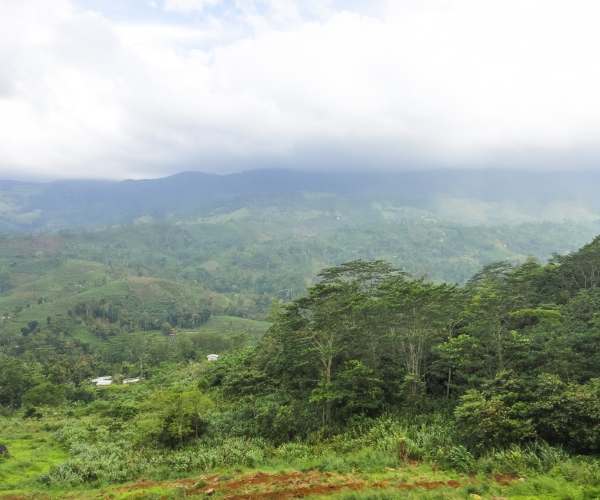Why Protecting the Sinharaja Forest Reserve Is Essential for Sri Lanka’s Future – By Nadeeka – eLanka

The Value of Sinharaja’s Biodiversity
Sinharaja Forest Reserve stands as Sri Lanka’s last major stretch of primary tropical rainforest. It holds an extraordinary level of biodiversity, and many species live only in this forest. Because of this, losing Sinharaja would mean losing plants and animals that the world cannot replace. Many rare birds, insects, amphibians, and trees rely on this rainforest for survival. Since these species evolved over thousands of years, they cannot simply adapt to another environment. Therefore, protecting Sinharaja helps preserve life that exists nowhere else on Earth.
How Sinharaja Supports Sri Lanka’s Climate
Sinharaja plays a central role in stabilizing Sri Lanka’s climate. The forest absorbs carbon dioxide and releases clean oxygen, which helps reduce the impacts of global warming. Its thick canopy cools the air, releases moisture, and supports regular rainfall. Because of this natural process, nearby regions enjoy a steady climate. If Sinharaja shrinks, the country will experience hotter days, irregular rainfall, and stronger weather extremes. This is why defending the forest is vital for long-term climate balance.
Sinharaja as a Water Source
Many rivers and streams begin inside Sinharaja. The forest acts like a natural water tank because its soil absorbs rain and slowly releases clean water into surrounding waterways. This process prevents floods during the rainy season and protects against drought during dry months. Farmers, villages, and even towns depend heavily on this water. Without the forest, river levels would drop, soil erosion would increase, and whole communities would struggle to find stable water supplies. Thus, protecting Sinharaja also protects the nation’s future water security.
Scientific and Educational Importance
Sinharaja functions as a living laboratory for researchers and students. Scientists visit the forest to study rare species, unique ecosystems, and medicinal plants. Many of these plants may contain compounds useful for future medicines. Students from universities and schools also learn about ecology through field visits. These studies help Sri Lanka understand climate patterns, forest regeneration, and biodiversity changes. Losing Sinharaja would shut down a major source of scientific knowledge. Because of this, its protection is essential for future research and education.
Cultural and Historical Significance
For generations, Sri Lankans have respected Sinharaja as a sacred natural treasure. Local stories, traditions, and beliefs connect deeply with the forest. Many villagers living around Sinharaja feel a strong bond with it because their culture teaches them to value nature. When the forest thrives, their traditions and way of life continue as well. Protecting Sinharaja therefore safeguards a cultural identity that belongs to the entire nation. It keeps alive a connection between people and the natural world.
Economic Benefits Through Tourism
Eco-tourism brings visitors from all over the world who want to explore the beauty of Sinharaja. This creates income for guides, small businesses, homestays, and local shops. Because the forest attracts travelers, many families depend on its protection for their livelihood. However, unplanned development and careless tourism can damage fragile ecosystems. For this reason, the forest must remain under strict protection to ensure tourism stays safe and sustainable. When managed responsibly, eco-tourism can continue to support the local economy without harming the rainforest.
Threats That Make Protection Urgent
Despite its importance, Sinharaja faces several threats. Illegal logging destroys old trees and damages animal habitats. Encroachment slowly reduces forest borders as people clear land for farming or construction. Certain types of tourism create noise, waste, and soil damage. Additionally, unplanned roads and development projects increase long-term risks. These threats may seem small at first, yet they weaken the entire ecosystem. Because of this, strong laws, regular monitoring, and community cooperation are necessary to keep Sinharaja safe.
The Role of Communities and Conservation Groups
Local communities help protect the forest because they understand its value. Many villagers now work as nature guides or conservation volunteers. They report illegal activities and teach visitors how to behave responsibly. Environmental groups also run awareness programs, conduct research, and support restoration efforts. Together with the Forest Department, these groups create a strong network of protection. Their combined actions make conservation more effective and long-lasting.
Why Every Citizen Must Help
Protecting Sinharaja is not the responsibility of the government alone. Every Sri Lankan can contribute by supporting eco-friendly habits, reducing plastic waste, respecting wildlife, and raising awareness about conservation. When more people understand the importance of Sinharaja, fewer threats will reach the forest. Even simple actions—like choosing sustainable products or sharing educational content—help create a protective culture around this precious rainforest.
Sinharaja and the Future of Sri Lanka
Sinharaja gives Sri Lanka clean air, safe water, balanced weather, rich biodiversity, scientific discovery, cultural depth, and economic opportunity. No man-made project can replace these benefits. If the forest disappears, the nation will lose a treasure that nature built over millions of years. Protecting Sinharaja ensures that future generations can breathe clean air, drink fresh water, learn from nature, and enjoy the beauty of a living rainforest.
For all these reasons, defending Sinharaja is essential. It is not only a forest; it is the heartbeat of Sri Lanka’s environment. When we protect Sinharaja, we protect the country itself.




















